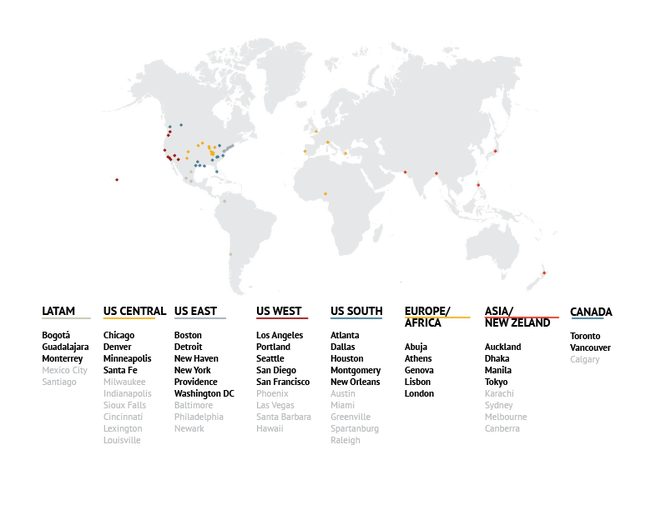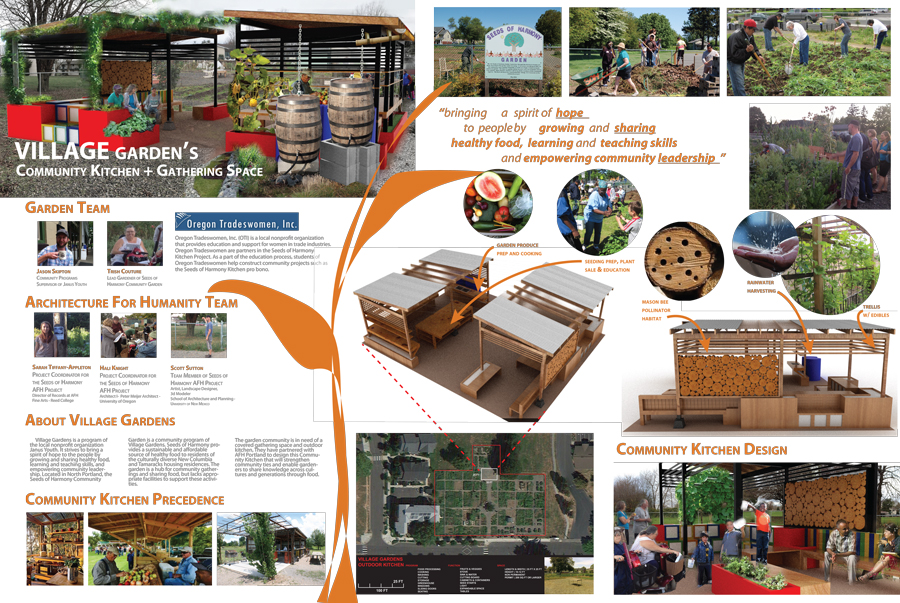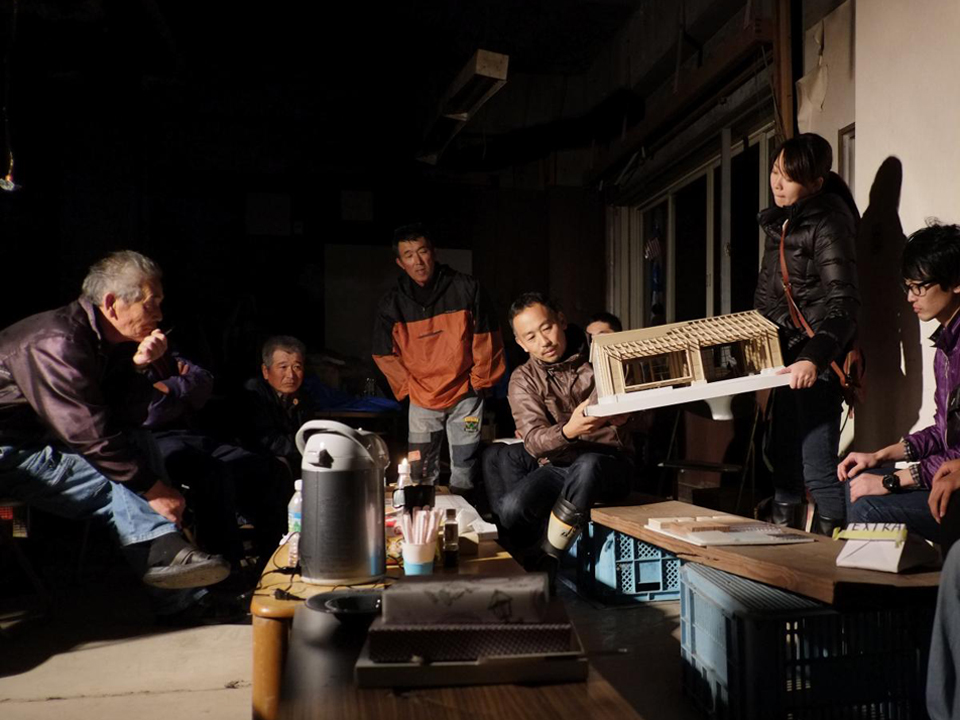
Architecture for Humanity Chapter Network – 30 remaining chapters after the bankruptcy
The answer is there is much to come! If anything it foreshadows a new beginning!
In the wave of the bankruptcy, all intellectual property including the name Architecture for Humanity and slogans like Design Like You Give a Damn, and the website including the Open Source Network have all become property of the bank. I will speak about the organization in past tense because technically it no longer exists. For those who are unfamiliar, Architecture for Humanity’s core mission was “[AFH] believes everyone deserves access to the benefits of good design.” Their publication Design Like You Give a Damn popularized pro bono work and disaster relief design efforts. Architecture for Humanity promoted a unique idea of crowd sharing design ideas for disaster relief through their Open Source Network, which could then be accessed by communities in need. The goal was to provide design solutions to communities in need that couldn’t afford the time and energy required to solve rebuilding design problems. Reconstruction projects after disasters are typically poorly designed and don’t respond to community socio-cultural and economic needs. Architecture for Humanity strove to solve this dilemma through a worldwide network of designers volunteering their time and ideas. Architecture for Humanity had local chapters that addressed local communities’ efforts instead of global disaster relief. Local chapters focused on creating the resiliency within communities.
My involvement in Architecture for Humanity started with the Hurricane Katrina disaster when our Clemson University studio began designing and fabricating a disaster-relief housing prototype in New Orleans. This was added to the Open Architecture Network (OAN) with the hope that the prototype could be a solution to the rebuilding effort. Like most of these projects, efforts were stifled by the bureaucracy of disaster relief. Since then, I have been volunteering for the past four years on small community projects through the AFH Portland Chapter.

Janus Youth’s Village Garden pavilion – Designed and built by AFH PDX Chapter in collaboration with Oregon Tradeswomen
As a result of the AFH filing for bankruptcy, the AFH core headquarters has collapsed leaving the chapter network to reorganize and create a new identity. The intellectual property of AFH, including the name and website and the OAN are all property of the bank. Of the 57 original chapters, 30 chapters are moving forward to continue on AFH’s path. A transitional steering committee has been formed with representatives from every region and will form an advisory board that will set the stage for self-governance and strategic partnerships. It is also interesting that AFH originally never intended to have a chapter network. Those who were inspired by the cause took it upon themselves to create local chapters and AFH agreed to allow these satellite chapters to become part of the organization. As one of the directors of the Portland chapter, I have been participating in re-imagining our mission statement and goals, looking for new opportunities to connect with other non-profits, and reaching outside of architecture to include all design fields. We can also learn from other design non-profits such as Public Architecture and Architects without Borders.
Non-profit design work has received some skepticism of whether a sustainable business model can be reached surrounding the bankruptcy of AFH. AFH’s vision was so powerful, that the non-profit grew exponentially in its original years. For an organization that relied heavily on donations to keep running, the stability was compromised when donations waned and AFH struggled to keep the headquarters office funded. The rapid growth seemed to be a large cause of the sudden deficit. Many contribute the downfall to an unsustainable business model, increased competition for financing, and the founders not being able to adapt their vision to a changing market. The press skeptics raise the question of whether donors will be reluctant to contribute to similar non-profits after the collapse of AFH. Cameron Sinclair, AFH’s founder, responds to this criticism well by saying “I don’t think the idea of architects doing humanitarian work is a failure because AFH ended, I think it will be a failure if architects realize they don’t care.” The committed 30 chapters are determined to carry on with or without support for large donors because they have support of their dedicated volunteers.

AFH Headquarters project – Maeami-hama Community House, 2012 – Community design input for post-disaster rehabilitation
There are many lessons to be learned as the remaining volunteers of AFH move forward to re-envision the organization. The future is still unclear, but the chapter network will learn from headquarters’ shortcomings. The business model will be changed, the organization of the network will no longer rely on a head chapter, and the projects might become more localized and financially sustainable. The bankruptcy has made the network of chapters stronger and our communication with each other has enabled continued enthusiasm for the cause. It is an exciting future for everyone involved because we are all included in the organization’s recreation. The Portland Chapter hopes to explore ways we can best connect communities to design. We want to provide the guidance and knowledge of design language and mediums to enable community visions.
I hope this can be a reminder on how important design and architecture are to creating vibrant communities. Organizations like AFH, Public Architecture, and Architects without Borders are all striving to bring greater accessibility to design. These organizations bring professionals closer to their community, give students and emerging professionals design and management experience, and help communities solve their design needs. The remaining chapters, consisting of thousands of volunteers around the world, are committed to providing pro-bono design services, advocacy, and training within our local communities. The next question to be asked is how can the AEC community be supported in ways that enable more professionals to provide accessible design?
Written by Hali Knight, Architect I
